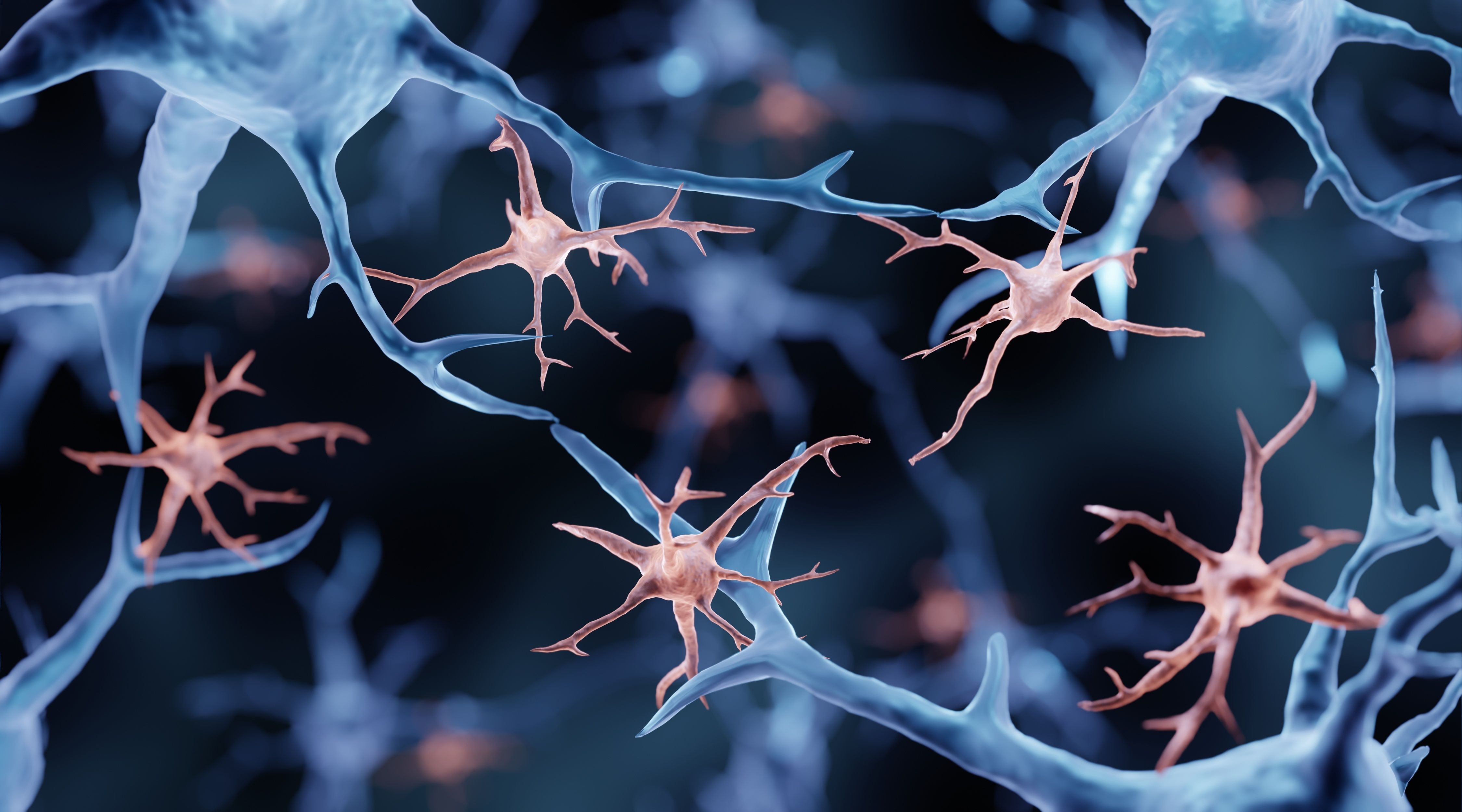SESI-HRMS Enables Real-Time Metabolomics Analysis of Animal Dendritic Cells
Researchers said they have devised a novel setup using a secondary electrospray ionization-high resolution mass spectrometry (SESI-HRMS) platform to detect bacterial cultures in cells that are vital to immune and memory functions.
Research recently published in the journal Analytical Chemistry considers the metabolomic signatures of dendritic cells (DC), analysis of which is desired by scientists because of the relationship of DC to the immune system and their potential in development of immunomodulatory strategies (1). The research team, based mainly in Basel, Switzerland, said its novel secondary electrospray ionization-high resolution mass spectrometry (SESI-HRMS) platform allowed for headspace analysis of both immature and activated DCs in real time.
Microglia are immune cells in the brain | Image Credit: © Artur - stock.adobe.com

According to the study, DCs sample and present antigens to immune system cells in animals, making them indispensable in terms of immune and memory function, but there are some limitations in the quantitation of their metabolomes, like labor-intensive sample preparation (1). Both liquid and gas chromatography coupled to mass spectrometry (LC–MS and GC–MS, respectively) have been used in targeted and untargeted experiments but require the use of isotopically labeled substrates to glean information on the dynamic processes of DCs. These methods also have sample preparation drawbacks, in terms of time.
SESI, a soft ionization method, is described by the researchers as being able to operate at ambient pressure and detect volatile organic compounds (VOCs) in the low parts per trillion range. Combined with HRMS, the team said this approach is proven to be faster, more sensitive, noninvasive, and able to be performed in real time with minimal sample preparation (1). Three separate studies were carried out for purposes of this report, the first measuring VOCs emitted by DCs after stimulation by two bacterial supernatants of E. coli, and the second and third dealing with those carbon emissions from labeled glucose, with analyses in real time over 4 h and after 24 h incubation.
While these test runs proved the advantages of SESI-HRMS, the research team did concede that limitations in the technical setup needed to be addressed. For one, they said automating the switch of the valves between cell culture flasks would improve measurement efficiency and data acquisition. They were also concerned about cell culture medium evaporation during long experimental runs (1). But the experiment did discover differences in the metabolic profiles of immature versus activated DCs, and yielded “significantly” altered pathways in the TCA cycle, α-linolenic acid metabolism, and degradation of valine, leucine, and isoleucine.
Overall, the platform did provide an “attractive complementary approach to standard metabolomics methods,” according to the researchers, for many of the reasons hypothesized for SESI-HRMS’s improvement over conventional LC–MS or GC–MS. By providing an assessment of DC metabolism related to immune cells, the study concluded that valuable information could be newly communicated to clear up “crosstalk” and emphasize the vital role of DCs in immunomodulatory strategies.
Reference
(1) Arnold, K.; Dehio, P.; Lötscher, J.; et al. Real-Time Volatile Metabolomics Analysis of Dendritic Cells. Anal. Chem. 2023, 95 (25), 9415-9421. DOI: 10.1021/acs.analchem.3c00516
New Method Explored for the Detection of CECs in Crops Irrigated with Contaminated Water
April 30th 2025This new study presents a validated QuEChERS–LC-MS/MS method for detecting eight persistent, mobile, and toxic substances in escarole, tomatoes, and tomato leaves irrigated with contaminated water.

.png&w=3840&q=75)

.png&w=3840&q=75)



.png&w=3840&q=75)



.png&w=3840&q=75)


